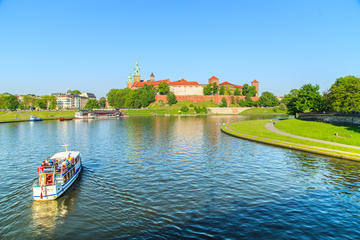Vistula River
TIME : 2016/2/22 13:47:19

Vistula River
The River Vistula (Wisła in Polish) is the longest and most important river in Poland, running 1,047 km (654.5 miles) from its source as a stream on the slopes of Borania Góra, the second-tallest mountain in the Silesian Beskids. On its journey northwards, the river flows through the rural backwaters of southern Poland, through Kraków and on to Warsaw until it tips itself into the Baltic Sea through its numerous tributaries in a delta west of Gdansk. The river’s significance is twofold; firstly as a trading route carrying minerals, coal and steel from industrial cities such as Płock to connect with the countries bordering the Baltic and to the waterways of Eastern Europe via the Dnieper-Bug Canal.
But the Vistula has also played a vital part in the cultural life of Poland. In Kraków the river encircles the ancient Old Town and is edged on both banks by grassy boulevards where locals enjoy jogging, cycling and picnicking in summer. In Warsaw, the mighty river is edged with sandy pockets of beach in the summer and other historic cities linked by the Vistula include Toruń in Mazovia, the walled, medieval city where Polish astronomer Nicholas Copernicus was born in 1473. The vast UNESCO-listed Gothic castle of Malbork lies on the River Nogat, the easternmost tributary of the Vistula, and in Gdansk there’s even a museum dedicated entirely to the river.
Practical Info
Seasonal sightseeing boats run between March and October along the River Vistula in Kraków, departing from the wharf underneath the Wawel Castle and chugging in a circular, hour-long tour past the castle, cathedral and the Skałka Sanctuary at the Baroque Church of St Stanislaus.
